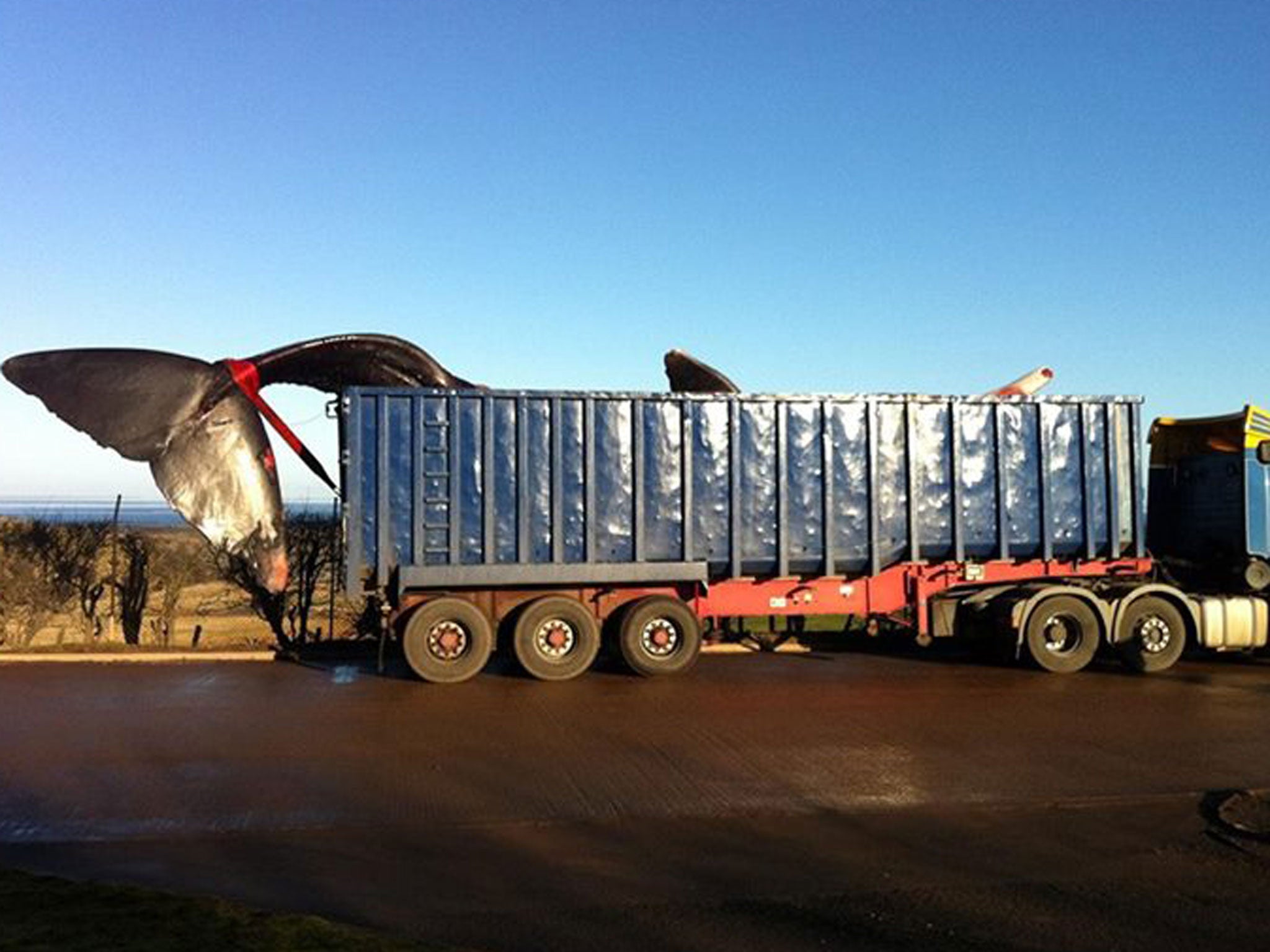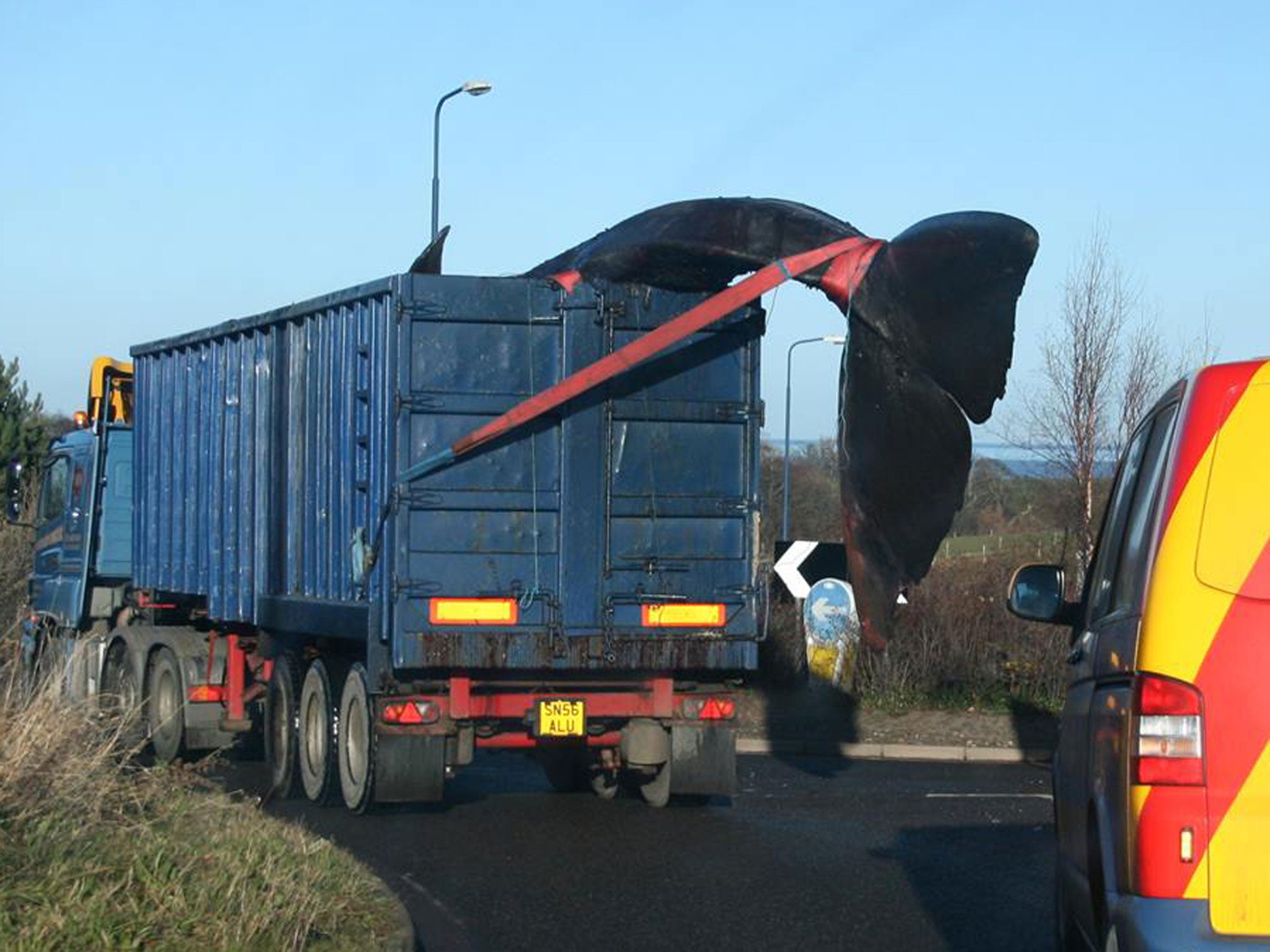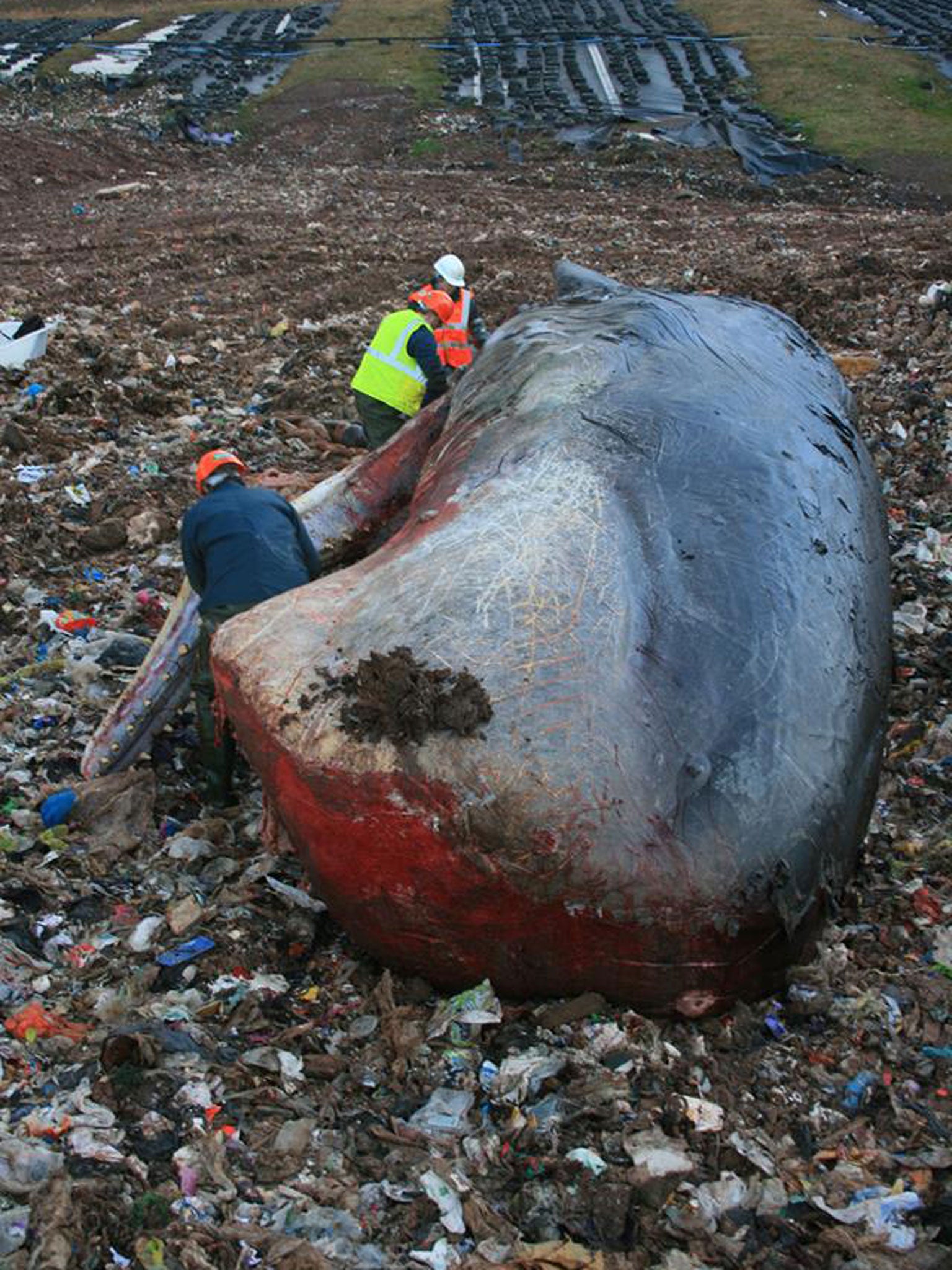Edinburgh sperm whale is taken to landfill
It's the end of the tale for the 30-tonne mammal which washed up on a beach

Your support helps us to tell the story
From reproductive rights to climate change to Big Tech, The Independent is on the ground when the story is developing. Whether it's investigating the financials of Elon Musk's pro-Trump PAC or producing our latest documentary, 'The A Word', which shines a light on the American women fighting for reproductive rights, we know how important it is to parse out the facts from the messaging.
At such a critical moment in US history, we need reporters on the ground. Your donation allows us to keep sending journalists to speak to both sides of the story.
The Independent is trusted by Americans across the entire political spectrum. And unlike many other quality news outlets, we choose not to lock Americans out of our reporting and analysis with paywalls. We believe quality journalism should be available to everyone, paid for by those who can afford it.
Your support makes all the difference.A 13.8 metre long sperm whale that washed up on an Edinburgh beach has been pictured in the back of the lorry transporting its body to landfill for a necropsy.
The 30-tonne mammal was discovered at Portobello beach in Joppa on Saturday. Marine experts believe it may have been killed in a collision with boat propellers in deeper waters.
Its carcass was towed to a port in Fife and then taken to a Scottish Marine Animal Stranding Scheme (SMASS) facility at Dunbar so experts could confirm the cause of death.
On their Facebook page, the SMASS said the necropsy was taking place at the landfill site because the size of the whale meant their only option was to remove the carcass as landfill.
It read: "There are only a few options for an animal this size. One is to leave it where it is and let nature take its course. Not an option here as it is too close to a major city but, an option in remote areas. Burying on site is another but, again not possible in this case as we were not able to get plant machinery down to do this and would likely be uncovered by tidal action.

"The only other option was to remove it to landfill. Not the nicest place to perform a necropsy but it does allow us to get an accurate weight on an animal that would be too big to weigh anywhere else."

Corinne Gordon, a marine mammal medic with British Divers Marine Life Rescue, who examined the whale told the BBC it had suffered deep cuts around its mouth and to its dorsal fin.
"It is a male sperm whale which is not adult that has washed up," she said.
"It has possibly been hit by a boat or propellers and that has caused severe damage. It has been dead for some time.
"It is possible it has been struck out in the deep and then washed inshore."
Subscribe to Independent Premium to bookmark this article
Want to bookmark your favourite articles and stories to read or reference later? Start your Independent Premium subscription today.
Join our commenting forum
Join thought-provoking conversations, follow other Independent readers and see their replies
Comments